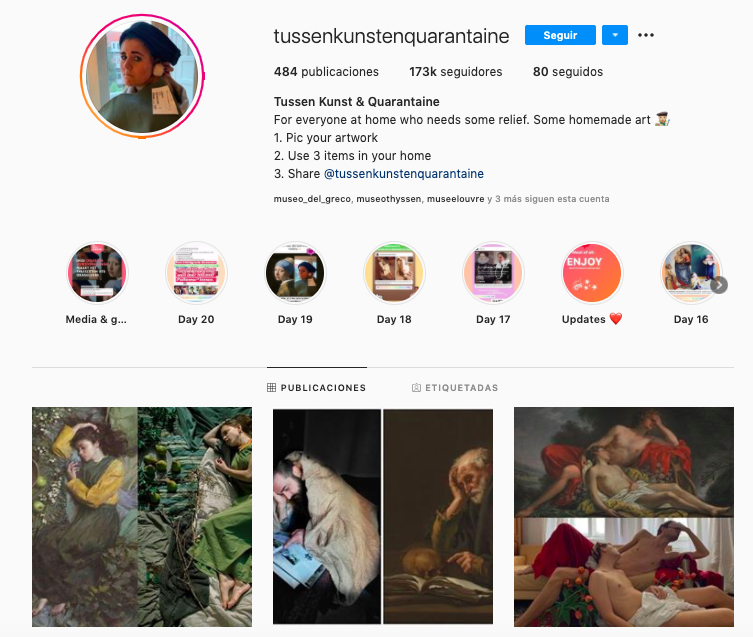Digital vignettes
It seems that once again the confinement is sharpening people's creativity, finding ways to have fun and give out creativity enclosed within four walls. Some of these initiatives - with a really impressive level of professionalism - are related to the latest digital "challenge" recovered during this quarantine. The imitation of the users of relatively well-known paintings, takes up again the tradition of the French 'tableau vivant' or the Vignette of the Victorian period. This practice consisted of a combination of theatre and painting. A group of actors would come together to create a living model of a particular work of art. In England the custom also extended to photography where people posed for a vignette or role play in which they acted out thematic scenes with religious, historical and even esoteric motifs.
Returning to the present day, this digital initiative began in Holland thanks to the @tussenkunstenquarantaine account that revived this movement during the quarantine, the Getty Museum popularized it and today it is a trend throughout the world.
#betweenartandquarantine
The ingenuity of the users helps, once again, to propagate the pictorial elements as images of our daily life in a wonderful and original way that helps us not to forget our works of art and our artists.
@tussenkunstenquarantaine shows the "rules" of such initiative:
For everyone at home who needs some relief. Some homemade art 👩🏼🎨
1. Pic your artwork
2. Use 3 items in your home
3. Share @tussenkunstenquarantaine
And the result is a true marvel, full of everyday examples, elements such as Netflix, masks or the main protagonist: toilet paper.
Museums are becoming involved in the initiative by sharing UGC (user generated content) and promoting it, as in the case of the above-mentioned Getty Museum, which helps this type of organic initiative to extend over time and obtain institutional support, thus reaching more people.
In Spain, we are still a little slow and reluctant to this type of initiative, although several institutions have joined the movement. For example, the Museo del Greco in Toledo has found replicas of the Greek painter's paintings that seem to be from the 16th century (some more than others...).






